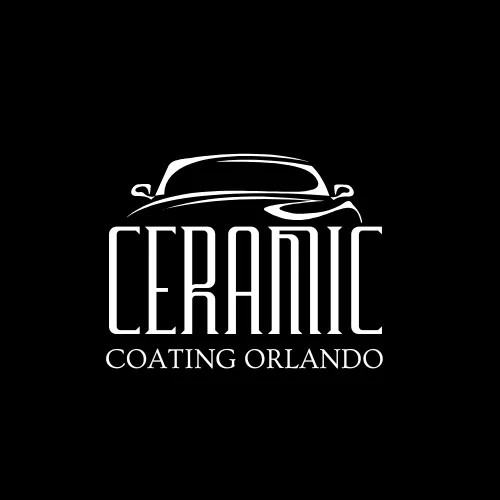Interior Ceramic Coating for Cars: Enhancing Durability and Aesthetics
Interior ceramic coating for cars is a cutting-edge treatment used to protect and enhance the interiors of vehicles. This innovative protective layer adheres to surfaces inside a car, offering a barrier that shields against wear, spills, and UV radiation. The process extends the lifespan of the vehicle's interior components, such as leather seats, dashboards, and door panels. With the increasing interest in maintaining car aesthetics and longevity, the adoption of interior ceramic coatings has seen a significant rise among car enthusiasts and professionals alike.
The application of interior ceramic coatings is a meticulous procedure that begins with a thorough cleaning of the vehicle's interior surfaces. Specialized products designed for various materials inside the car are selected and applied, providing not just protection but also easier maintenance. This has given rise to a debate between the merits of professional application versus do-it-yourself approaches. While professionals guarantee expert-quality results, DIY kits have become readily available, allowing automobile owners to undertake the process themselves.
Key Takeaways
Interior ceramic coating provides durable protection for vehicle interiors. A precise application process ensures maximum effectiveness of the coating. Options exist for both professional application and DIY kits.
Benefits of Interior Ceramic Coating
Interior ceramic coatings offer a range of advantages for vehicle interiors, enhancing protection and reducing maintenance.
UV Protection
Interior ceramic coatings provide a shield against the sun's harmful ultraviolet (UV) rays. This helps to
prevent fading and aging
of the dashboard, seats, and other interior components that are exposed to sunlight, prolonging the materials' durability and appearance.
Stain Resistance
These coatings create a hydrophobic surface, which means that liquids are less likely to penetrate the material. Spills from beverages, food, or other substances can be wiped away more easily, thus maintaining the integrity and look of interior fabrics and surfaces.
Ease of Cleaning
A significant benefit of ceramic coatings is their ability to simplify the cleaning process. Dirt and grime can often be removed with a simple wipe-down, without the need for aggressive scrubbing or harsh chemicals, maintaining the interior's pristine condition with less effort.
Application Process for Interior Ceramic Coating
The application of ceramic coating on car interiors involves meticulous attention to surface preparation, the precise application of the coating, and adherence to curing times for optimal durability and finish.
Surface Preparation
Proper surface preparation is crucial for the ceramic coating to bond effectively. All interior surfaces, including leather, vinyl, plastics, and upholstery, must be thoroughly cleaned to remove dirt, oils, and any existing protectants that could impede the coating's adhesion. Areas not being coated should be masked off to avoid accidental application.
Vacuum all upholstery and surfaces.
Clean the surfaces using a specialized interior cleaner:
Leather and Vinyl: Use a pH-neutral leather cleaner.
Plastics: Use an interior plastic cleaner that does not leave behind residues.
Coating Application
The application must be done with precision, using the right tools and techniques.
Leather Surfaces: Apply the coating using a microfiber applicator pad. Ensure even application with light, overlapping strokes.
Plastic and Trim Surfaces: Use a foam applicator or a soft brush to get into tight spaces and textures. Apply in a thin, even layer to avoid buildup.
Do not apply excessive force or over-apply the product which can lead to uneven coverage.
Curing Time
After application, the coating requires a specific period to cure and achieve full hardness. During this time, the vehicle's interior should be kept dry and not be exposed to extreme temperatures.
Initial Curing: Allow the coating to dry for at least 24 hours before using the vehicle.
Full Cure: The complete curing process may take up to 7 days depending on environmental conditions and the specific product used.
Note: Adhering to the recommended curing time is essential for ensuring the longevity of the protective coating.
Types of Ceramic Coatings for Interiors
Ceramic coatings for car interiors provide durable protection against spills, stains, and UV damage. They create an easy-to-clean surface, enhancing the cabin's aesthetics and longevity.
Nano Ceramic Coatings
Nano ceramic coatings utilize nanotechnology to form a microscopic layer of protection on interior surfaces. They are comprised of tiny particles that bond with the surface at a molecular level.
Advantages of nano ceramic coatings include:
High resistance to chemicals and scratches.
Superhydrophobic properties, repelling water and oils.
It is applied to a variety of materials, such as leather, plastics, and fabrics.
Polymer-Based Coatings
Polymer-based coatings are synthetic options offering a flexible protective layer.
Characteristics of polymer-based coatings are:
Elastic nature, allowing for movement without cracking.
Long-lasting bond with the surface due to cross-linking polymers.
These coatings are praised for their ability to preserve the interior's appearance while resisting daily wear and tear.
Maintenance of Ceramic-Coated Interiors
Ceramic coatings provide a durable layer of protection to car interiors, but regular upkeep is essential to maintain their benefits and appearance. Proper cleaning techniques and products can extend the life of the coating.
Regular Cleaning Tips
Routine Cleaning: Use a microfiber towel to dust off surfaces gently. For more thorough cleaning, a water-diluted pH-neutral cleaner is recommended to avoid damaging the ceramic coating.
Avoid Harsh Chemicals: Steer clear of strong solvents and acidic interior cleaners, which can strip the coating's properties.
Spot Treatment
Immediate Attention: When spills occur, they should be addressed promptly with a soft microfiber cloth to prevent staining.
Long-Term Care
Inspection and Touch-Up: Every few months, inspect the coating for any signs of wear. Professional touch-ups can address any areas where the ceramic protection might be weakening.
Professional versus DIY Applications
When considering interior ceramic coating for cars, vehicle owners have to choose between professional application services and do-it-yourself (DIY) kits. Each option comes with its specific set of advantages and disadvantages that cater to different needs and skill levels.
Pros and Cons of Professional Application
Pros:
Expertise: Professional installers possess the necessary skills and experience, ensuring a high-quality finish.Warranty: Many professional services offer warranties, providing peace of mind and protection for the investment.
Cons:
Cost: Professional services generally come at a higher price compared to DIY kits.
Scheduling: An appointment is required and the vehicle might be unavailable for use during the application process.
Pros and Cons of DIY Kits
Pros:
Affordability: DIY kits are typically less expensive than professional services.
Flexibility: They allow the owner to apply the coating at a convenient time without needing to schedule an appointment.
Cons:
Skill Level: The quality of the finish is heavily dependent on the user's ability to apply the product correctly.
No Warranty: Mistakes made during application may not be covered without a professional service warranty.
Frequently Asked Questions
When considering interior ceramic coatings for cars, buyers generally have a series of common inquiries. These touch on the durability, cost-effectiveness, and maintenance implications of applying ceramic coatings to car interiors.
How long can one expect an interior ceramic coating to last on car seats?
An interior ceramic coating on car seats typically lasts between one to five years. The longevity largely depends on factors like usage, exposure to sunlight, and the quality of the coating material.
What are the drawbacks of applying ceramic coating to a car's interior?
One drawback is the cost, as professional application can be expensive. Improper application can lead to uneven protection, and some interior materials may not bond well with the coating, resulting in peeling or discoloration.
What factors should be considered when choosing the best ceramic coating for car interiors?
When selecting a ceramic coating for car interiors, one should consider the type of material to be coated, the product's durability, the manufacturer's reputation, and the ease of application. Buyers must also assess whether the coating offers UV protection and resistance to stains.
Is interior ceramic coating cost-effective compared to traditional auto interior protections?
Ceramic coating can be cost-effective over time, as it typically provides longer-lasting protection compared to traditional methods like leather conditioners and fabric protectors. By reducing the frequency of applications needed, it can save money and effort in the long run.
How does ceramic coating impact the maintenance and cleaning of car interiors?
Ceramic coating simplifies the cleaning process by repelling liquids and preventing stains. It can make maintaining a car's interior easier, as surfaces coated with ceramic need only mild cleaning agents for upkeep.
Can ceramic coating be applied to car interiors as a DIY project, and what are the challenges involved?
While it is possible to apply ceramic coating as a DIY project, challenges include ensuring a clean and dust-free environment, applying the coating evenly, and having the patience and precision required for a successful application. The risk of improper application might lead to increased costs and effort to correct mistakes.


TESTIMONIALS
Wow! So happy with how my car looks after getting the ceramic coating! The people there really knew their stuff and helped me out. They took their time and made sure everything was done right. Now, my car shines like crazy and feels protected. Totally recommend them!
Michael D. (verified customer)
Super impressed with the ceramic coating service! My car looks amazing and shiny. The team was really nice and made the whole process easy. Now, I feel like my car is ready to take on anything. Definitely coming back!
Brian W. (verified customer)
Get In Touch



Facebook